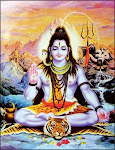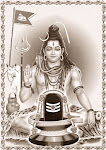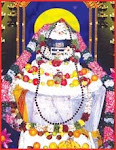

A festival in Vavuniya Sri Kandaswami kovil........ Devotees in Kataragama
Hinduism
Ancient and medieval Hindu temples in Sri Lanka
KAMALIKA PIERIS
Hindus say that in ancient Sri Lanka there were five sacred Hindu temples dedicated to Siva. They were Munnesvaram, Kataragama, Kailayanatar kovil in Nallur, Tirukketisvaram in Mantota and Tirukkonesvaram in Trincomalee. However, it is not easy to find information which confirms this. The earliest available reference to Munneswaram says that Parakrama babu VI (1412-1467) renovated Munneswaram. The earliest reference to Kataragama is in the Jinakalamali. (15th century). The Pandyan rulers of Jaffna built the Kailayanatar kovil, Nallur in the 13th century.
Dathavamsa, (12 century) speaks of a Hindu temple (devalaya) at Mantota in the reign of King Meghavanna Abhaya. (301-328). Two Sinhala inscriptions of the 10 century refer to the prohibition on slaughtering cows at Mantota. These references to a Hindu temple at Mantota are taken as references to Tirukketisvaram. The saints Campantar and Cuntarar, who led the Saiva revival in South India in the 7th century, had each produced a hymn in honour of Tirukketisvaram.
Tirukkonesvaram in Trincomalee is the most important of these temples. It is said to be very old, R.Vigneswaran in his book ‘Rock cave temple of Thirukoneswaram’ (2002) says the first temple was constructed as a cave temple in 2590 BC. It was built over an existing Siva lingam.
There was a settlement of Tamils near the temple. This temple fell into the sea during a flood and is still there. The gopuram survived and a second temple was then built by King Manikka Raja in 1300 BC.
This consisted of three temples built at three levels, on the promontory facing the sea. The Siva temple was built directly upon the gopuram of the original cave temple. (Sunday Observer 8.12.02 p 42.).
Historian S Pathmanathan notes that according to the Mahavamsa king Mahasen had a dispute over the ‘temple of the gods’ at Trincomalee. Saint Campantar has sung a hymn to the shrine at Trincomalee. Trincomalee can be identified in the hymn because the hymn says that large quantities of gems, pearls sandalwood and aloe wood could be found at the site.
Pathmanathan says Indian records speak of a Siva temple named Gokarna in Malaya dvipa. Malaya dvipa is probably Sri Lanka. ‘Tiru’ means holy, ‘malai ‘means hill and ‘kona ‘comes from Gokarna. Three poetic works from Tamilnadu, titled ‘Taksina kailacapuranam’ (14th century), ‘Konecar kalvettu’ (16 century) ‘Tirukonacala puranam ‘(18 century) as well as local texts written after the 14 century also provide information on this temple.
The remains of 14 Hindu temples have been found in Polonnaruwa dating from the 11th century. They are mainly Saivite, but a few temples dedicated to Vishnu, Durga and Ganesa have also been found. Siva devale no 1 in Polonnaruwa and the temples in Padaviya, Gantale and Budumuttuva (on Puttalam Rd in the Kurunegala district) are dated to the 12th century.
A bronze seal, datable to 12th or 13th century was found at Padaviya. It is the only seal found so far, which was issued by a temple. South Indian merchants were associated with the Hindu temples at Anuradhapura, Polonnaruwa, Mantota and Padaviya.
The Cholas, who ruled over the Rajarata in the 11th century, were patrons of Saivism. Siva Devale No 2 at Polonnaruwa is dated to the Chola period. Five Siva temples that can be dated to Chola period have been identified at Moragoda and Buddhanehela in Padaviya.
There was also a Hindu temple in Gantale and another at Madirigirya. They were maintained by south Indian merchants. Chola inscriptions found at Mantota refer to two Siva temples, Rajarajesvaram and Tiruviramisvaram which no longer exist.
Magha of Kalinga invaded with south Indian troops and ruled over Rajarata from about 1215 to 1232.According to local tradition Subramanya temple at Tirukkovil is associated with Magha. The vimana, which is the only remaining part of the temple, has been dated to 13th century. Vira Saivism was introduced during Magha’s time. Vira Saivism rituals continue to this day in the Hindu temples of the eastern littoral.
Hinduism seems to have been restricted to the Tamils. The remains identified as Hindu temples at Anuradhapura, were set among the ‘Tamil ruins’ in the northern sector. Five sets of remains were identified. Illangasinha, speaking of the medieval period, pointed out that ‘these Siva temples in the Sinhala areas by no means suggests that the faith had a Sinhala following.
Almost all inscriptions found in these places are in Tamil and the prayers were made in Tamil, indicating that these were for the Tamil population.’
Kiribamune says the Hindu temples enjoyed the goodwill of the Sinhala kings. Vijayabahu I (1055-1110) built some of the Hindu temples found in Polonnaruwa. He also supported a Hindu temple at Gantale. Vijayabahu I had to take note of the fact that he had a large group of Tamils under him. Parakrama bahu I (1153-1186) built 13 Hindu temples and restored 79 other temples. These temples do not exist today. The Murukan temple at Nallur in Jaffna is dated to Buvaneka bahu VI (1470-1478).
Over 17 bronze images of a variety of Hindu gods, showing high workmanship were found in Polonnaruwa. Most were from Siva devale no 5. Sirimal Lakdusinghe, as well as the Indian art critic, C. Sivaramamurti were of the opinion that there was a Sri Lankan school of Hindu sculpture. The Saiva bronzes discovered at Polonnaruwa carry distinctive characteristics which show that they belong to a school of Sri Lanka sculpture.
There is a proposal to declare Munneswaram, Tiruketiswaram and Koneswaram as Heritage sites. Bandu de Silva points out that the sanctity of Tirukketisvaram and Koneswaram temples is based on mere folklore rather than proven historical facts. The historical records indicate that three Buddhist temples stood on the hill over looking the Trincomalee harbour. The Portuguese demolished the temples and used the material for a fortress. This Buddhist connection should not be forgotten.
(The writings of H.B.M .Illangasinha, S. Kiribamune, D.G.B. de Silva and S. Pathmanathan were used for this essay).
dailynews.lk







